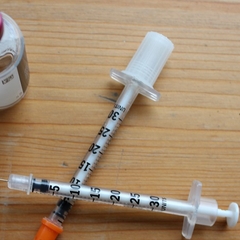
What is Needed to Improve Affordability of Insulin?
16 Dec 2015, 12:12 p.m. in #insulin4all USA by Ryan Knox
We have dozens of insulin products on the market, consisting of human, animal, and analog insulins. Many of the originator products are off patent or soon coming off patent, allowing for generics and biosimilars to enter the market. Yet availability of affordable insulin continues to be a problem. Is the structure of the insulin market itself a barrier to access?
Limited competition in the global insulin market could be a barrier to equitable access to affordable insulin. In order to gain a better understanding of the insulin market, a team of researchers at Boston University School of Public Health conducted a study to identify insulin manufacturers and regions of opportunity in the global insulin market. Over 90% of the insulin market (by value) is controlled by three pharmaceutical companies: Novo Nordisk, Sanofi, and Eli Lilly. Of the 121 countries included in the study, 55% were only supplied insulin by one or some combination of the three main companies that manufacture insulin.
In addition to those three companies dominating the market, the study identified another 39 potential insulin manufacturers globally, making up the remaining 10% market share. The study found the three leading companies had their insulin products registered and/or sold in over 90 countries each, while the top four of the additional 39 manufacturers only had their insulin products registered in and/or sold in 10-30 countries.
Competition in a market tends to increase affordability of a product, so increasing competition in the global insulin market could increase affordability and access to insulin. In this respect, these 39 potential insulin manufacturers demonstrate an opportunity for increased competition. The markets in China and India have many potential insulin manufacturers that are beginning to gain a global reach. Other manufacturers based in Poland, United Arab Emirates, and Mexico may also be promising in expanding their presence. But little is still known about these companies and whether they have the capacity to compete with Novo Nordisk, Sanofi, and Eli Lilly. International trade barriers, national quality standards and product approvals, and other legal, market, and health system factors may also prevent increased market competition, but further research must be done to understand how the market interacts with local environments.
Going forward, we need to know more about these potential competitors in the insulin market to fully determine whether we can change the insulin market structure. Researchers at Boston University are planning to further explore and profile these companies, possibly conducting interviews with representatives, to learn more about their role in the insulin market. This will help us proceed and work towards making insulin available and affordable for all.
Related Posts:
- Diabetes Debt: 3 Stories
- The Cold Cost of American Capitalism
- Diabetes and the "American Dream"
- America is #1 - in Diabetes Costs
- Patients vs. Pharma: Hagens Berman files complaint against 'Big Three' insulin producers
- ‘‘It would be cheaper for me to die’’
- Exorbitant Diabetes Costs Must be Addressed
- My Fight for Information
- Access to Health Care in the USA





